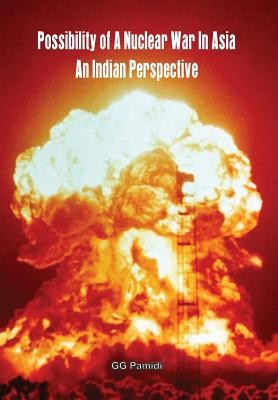
- We will send in 10–14 business days.
- Author: G G Pamidi
- Publisher: VIJ BOOKS INDIA
- Year: 2012
- Pages: 240
- ISBN-10: 9381411514
- ISBN-13: 9789381411513
- Format: 15.6 x 23.4 x 1.4 cm, kieti viršeliai
- Language: English
- SAVE -10% with code: EXTRA
Reviews
Description
This book attempts to fuse two topical subjects and deal with them in a holistic manner. It is oft said and is also widely believed that the 21st century belongs to Asia and that the two giants of Asia, namely, China and India are going to dominate the world in the ensuing decades. It is also implicitly accepted that nuclear weapons are going to be there, at least for the foreseeable future. These are the two topics that have been analysed in this book; nuclear weapons and the emerging epicenter of global affairs, namely, Asia. The book deals with the fundamental nature of nuclear weapons itself. It purposely steers away from the Cold War mindset of viewing nuclear weapons in a western manner and attempts to unravel the manner in which the nations of Asia view these weapons in their own unique way. It is also about the nature of disputes in Asia and the security environment in Asia, both presently as well as in the foreseeable future. Since it is a fact that there are unresolved disputes in the region, the book also deals with the aspect of analysis of potential conflict scenarios. Will the countries succeed in settling their disputes diplomatically? Can deterrence succeed? What will happen if that fails? What will be the shape of future conflicts? This book makes a modest attempt to provide answers to some of these perplexing questions that plague policy makers and strategists in Asia today. Since the study is from an Indian perspective, the focus is naturally biased more towards South Asia vis-Ã -vis the other parts of Asia. Though the book attempts to answer all questions, some tough questions typically deny neat solutions. As the author admits, the aim of the book is to get both the policy and decision makers as well as the professional military to think about these issues, so that, in time, workable solutions can be evolved.
EXTRA 10 % discount with code: EXTRA
The promotion ends in 21d.14:56:39
The discount code is valid when purchasing from 10 €. Discounts do not stack.
- Author: G G Pamidi
- Publisher: VIJ BOOKS INDIA
- Year: 2012
- Pages: 240
- ISBN-10: 9381411514
- ISBN-13: 9789381411513
- Format: 15.6 x 23.4 x 1.4 cm, kieti viršeliai
- Language: English English
This book attempts to fuse two topical subjects and deal with them in a holistic manner. It is oft said and is also widely believed that the 21st century belongs to Asia and that the two giants of Asia, namely, China and India are going to dominate the world in the ensuing decades. It is also implicitly accepted that nuclear weapons are going to be there, at least for the foreseeable future. These are the two topics that have been analysed in this book; nuclear weapons and the emerging epicenter of global affairs, namely, Asia. The book deals with the fundamental nature of nuclear weapons itself. It purposely steers away from the Cold War mindset of viewing nuclear weapons in a western manner and attempts to unravel the manner in which the nations of Asia view these weapons in their own unique way. It is also about the nature of disputes in Asia and the security environment in Asia, both presently as well as in the foreseeable future. Since it is a fact that there are unresolved disputes in the region, the book also deals with the aspect of analysis of potential conflict scenarios. Will the countries succeed in settling their disputes diplomatically? Can deterrence succeed? What will happen if that fails? What will be the shape of future conflicts? This book makes a modest attempt to provide answers to some of these perplexing questions that plague policy makers and strategists in Asia today. Since the study is from an Indian perspective, the focus is naturally biased more towards South Asia vis-Ã -vis the other parts of Asia. Though the book attempts to answer all questions, some tough questions typically deny neat solutions. As the author admits, the aim of the book is to get both the policy and decision makers as well as the professional military to think about these issues, so that, in time, workable solutions can be evolved.


Reviews